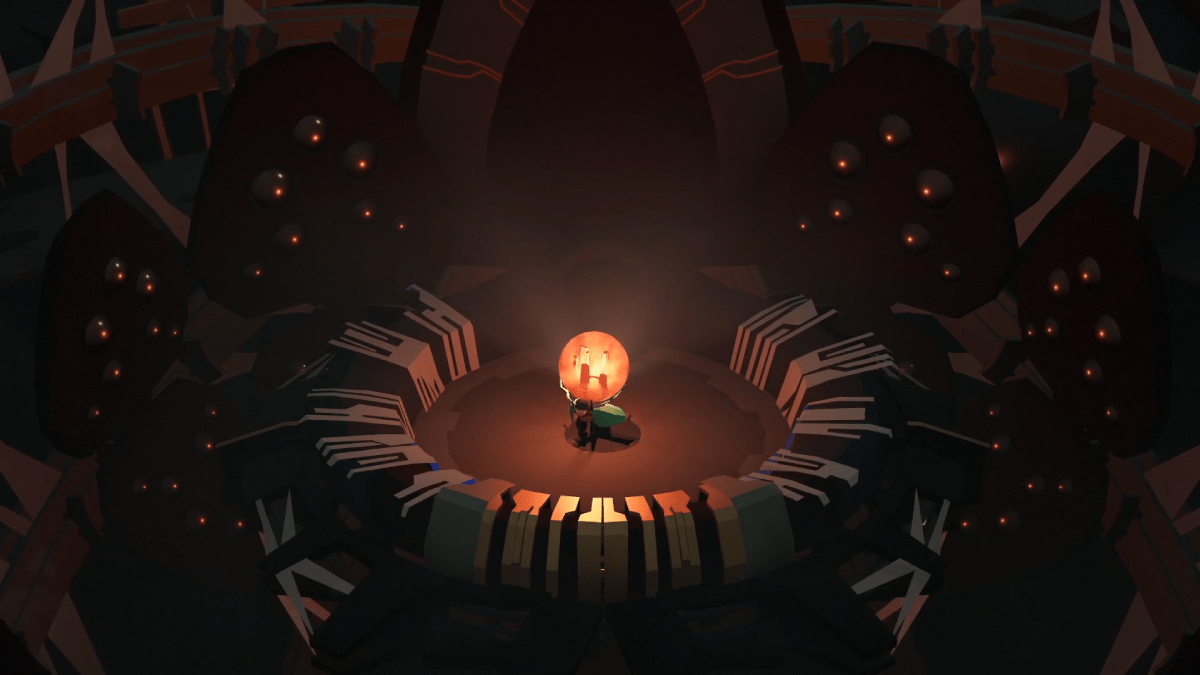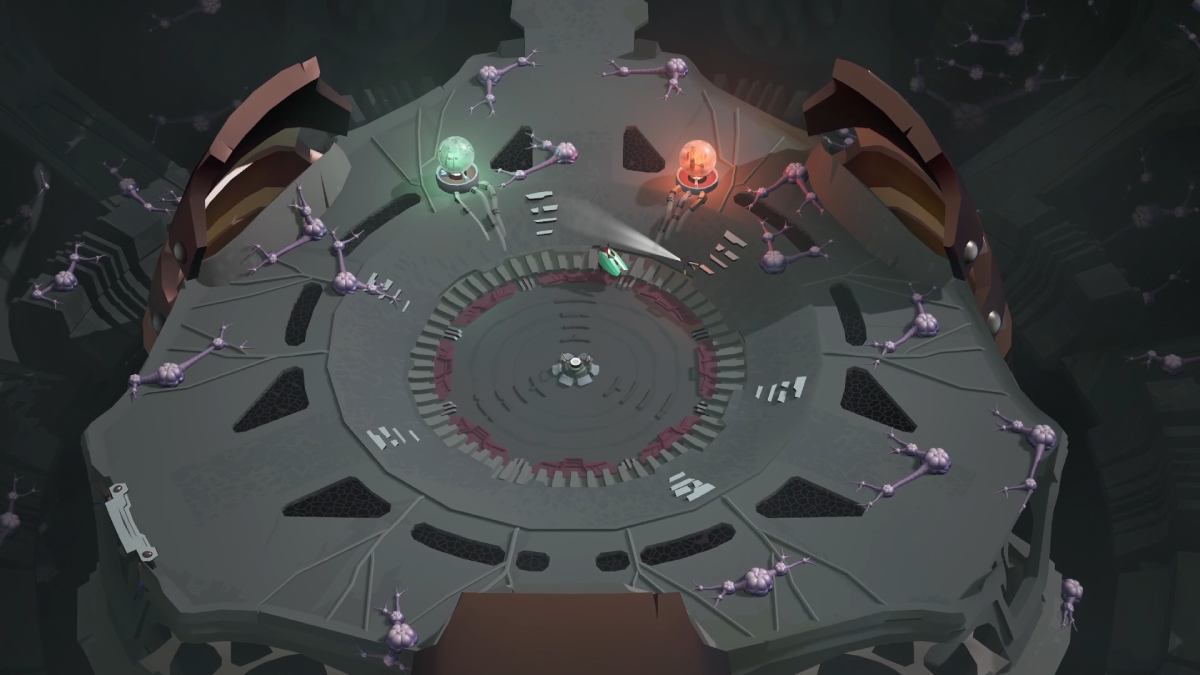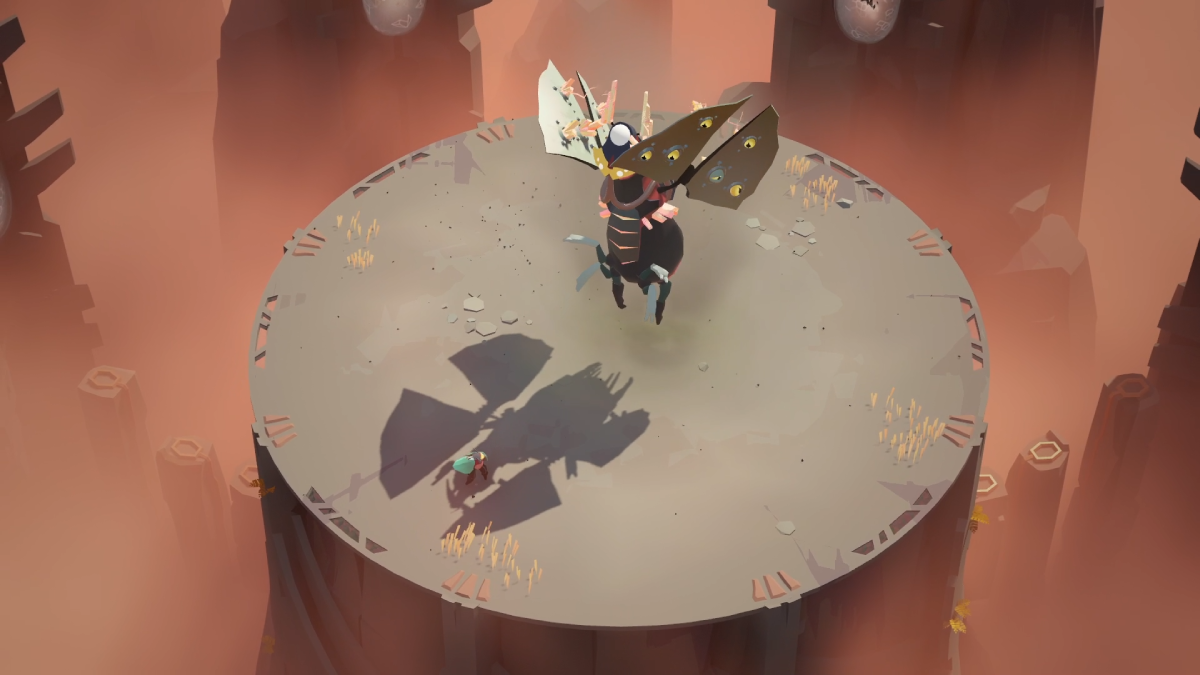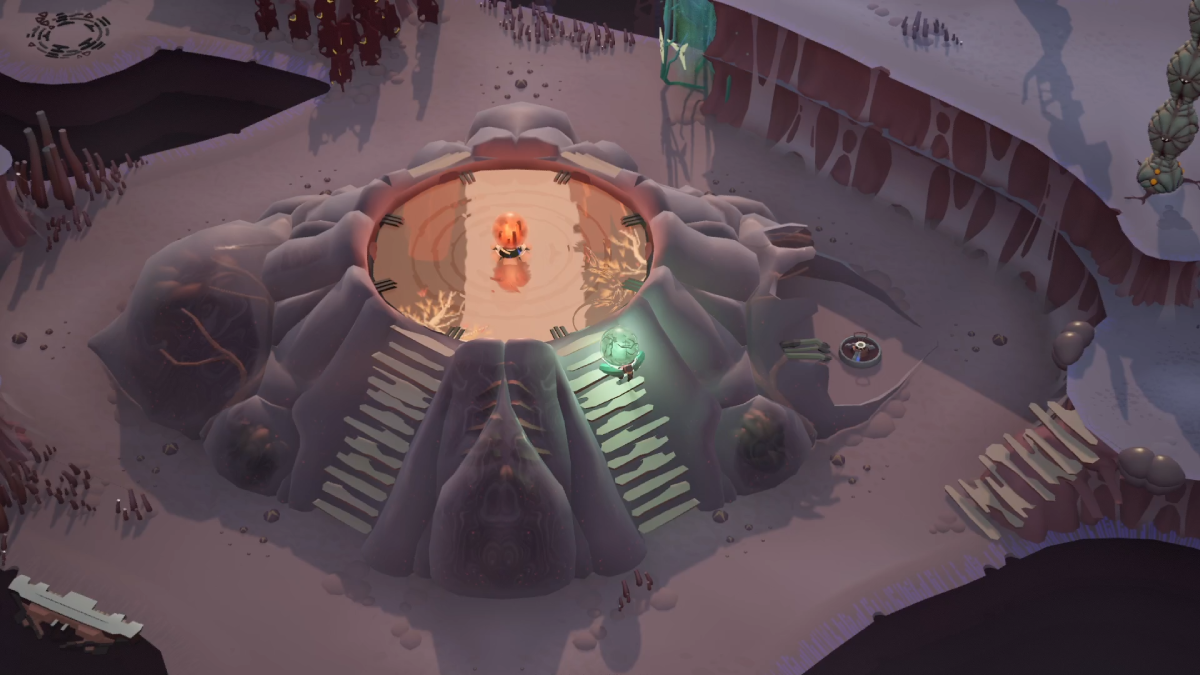When I played the Cocoon demo in June 2023, my main takeaway from the experience was intrigue. It left a lot of open questions, yet its gameplay design and mysterious atmosphere made me desperate to play more. My experience with the full game has failed to answer many of the questions the demo instilled in me. Instead, it asked even more and left me unable to stop thinking about what on earth I experienced.
This is a good thing.
Cocoon is the brainchild of former Playdead designer Jeppe Carlsen, who designed many of the puzzles in Limbo and Inside. While he was not responsible for the overall aesthetic and storytelling of those games, there is some clear shared DNA here. This mostly comes across in the vague way its world and story are presented. However, Cocoon is an even less explainable experience.

Cocoon is set in a surreal world full of biomechanical contraptions and natural structures fused with machines. The opening desert area is peppered with metal plating and machines that move like bugs. You, too, are some kind of mechanical bug, resembling a fly that someone made from repurposed toy parts.
At the start of the game, you emerge from the titular cocoon, a disturbingly yonic onion full of flesh and wires. You wander the desert, pushing switches and activating machines until you fly upwards and out of the world, which is now contained in a small orange orb. And that’s your introduction to the game and its central concept.
That’s how Cocoon continues to play out. Much of the game involves you hopping in and out of these world orbs, using them for a series of abstract puzzles. You combine these orbs in increasingly odd ways, creating a Russian doll of worlds within worlds. As you progress, you unlock extra abilities that help you navigate the bizarre landscapes, such as the ability to reveal hidden paths or turn certain platforms hollow. It feels like there’s a story here, although I am at a loss on how to describe it to you.

During my time with the Cocoon demo, I wondered how the world orb concept was going to be fleshed out beyond the two worlds I’d seen. I expected to see more worlds, of course, but what I didn’t expect while playing the full game was how much the game would uprooted its own concept and go off on tangents I didn’t expect. No spoilers, but there are parts of the game’s later stages that blew my mind when I realised what I’d been led to do. The rabbit hole just keeps getting deeper, and not just because you keep stuffing more world orbs into it.
What’s impressive about all this is despite how mind-bending the concept is, the puzzle design itself is relatively straightforward. Controls are as basic as it gets, with movement and a single action button used for interacting with objects in the world. Every puzzle is self-contained, with all the pieces present, you just need to figure out the correct way to assemble them.
This doesn’t mean the puzzles in Cocoon are easy. The way these elements are laid out isn’t always obvious, not to mention many puzzles are layered on multiple planes of existence, just to make the solution even less clear. However, nothing is ever so obtuse it leaves you clueless. Every solution had a logical solution once you’re used to the way this works. If anything, the times I got stuck were my own fault, usually by overcomplicating the puzzles. I would come up with absurd galaxy brain solutions only to find the real answer involved just using a different warp point. In these moments, I always found myself praising the game for somehow knowing how to kick the puzzle-solving part of my brain into overdrive, even to my own detriment.

The world of Cocoon is an interesting one. It’s never clear where we are or what we’re doing, but offers a lot of intrigue. There are multiple boss fights against creatures with bizarre designs cooked up from a fever dream. The structures of the world are both highly advanced while also crumbling apart at the seams. The biomechanical design choices also become horrific in places, raising more questions about the purpose of everything we see.
That said, the vagueness is both a positive and a negative for Cocoon. While it is interesting, its persistent refusal to even offer a crumb of information can be frustrating. There is no dialogue, no notes to provide context and barely any coherent environmental elements that ground the player. Carlsen’s previous work was equally vague, but at least both Limbo and Inside took place in worlds similar to our own. Limbo’s moody forests and Inside’s obvious dystopia gave the player a foundation to work with, even if they had to figure everything else out.
By contrast, Cocoon is alien in every way. Why are so many switches disco balls attached to fleshy tendrils? What is the purpose of the facility that houses the orbs? Who are the other insectoid creatures that can be found down hidden paths? We may never know. Of course, leaving things open to interpretation is fine, maybe even encouraged, but there’s just so little to latch onto to even begin formulating any theories. Are we in some kind of multiverse factory? Is this the inner workings of a giant machine or a creature of some kind? Is our bug man a diligent worker, a rebel or simply lost? The answer may be all of these. Equally it may be none of them. It’s all down to your own interpretation.

Your reaction to this will vary greatly. As someone who doesn’t mind art being impenetrable and weird for the sake of it, I had a great time. However, there are other players who might react with horror as there are no relatable characters and no obvious end goal.
Cocoon is also extremely short. My playthrough clocked in between 4-5 hours and there is little to no replayability. There are hidden paths with secrets, and they could even lead to a secret ending. But playing through the game a second time involves replaying every puzzle you’ve already solved, which has much less appeal than the initial run.
Cocoon is a strange game but one that’s worth the experience for those willing to accept that. The visual design is a treat of surreal imagery, and the puzzle design is superb. If you like unfathomable narratives and journeys through alien worlds, it’s highly recommended.
Cocoon will be released on September 29, 2023 for PC, Xbox One, Xbox Series X/S, Switch, PS4 and PS5.